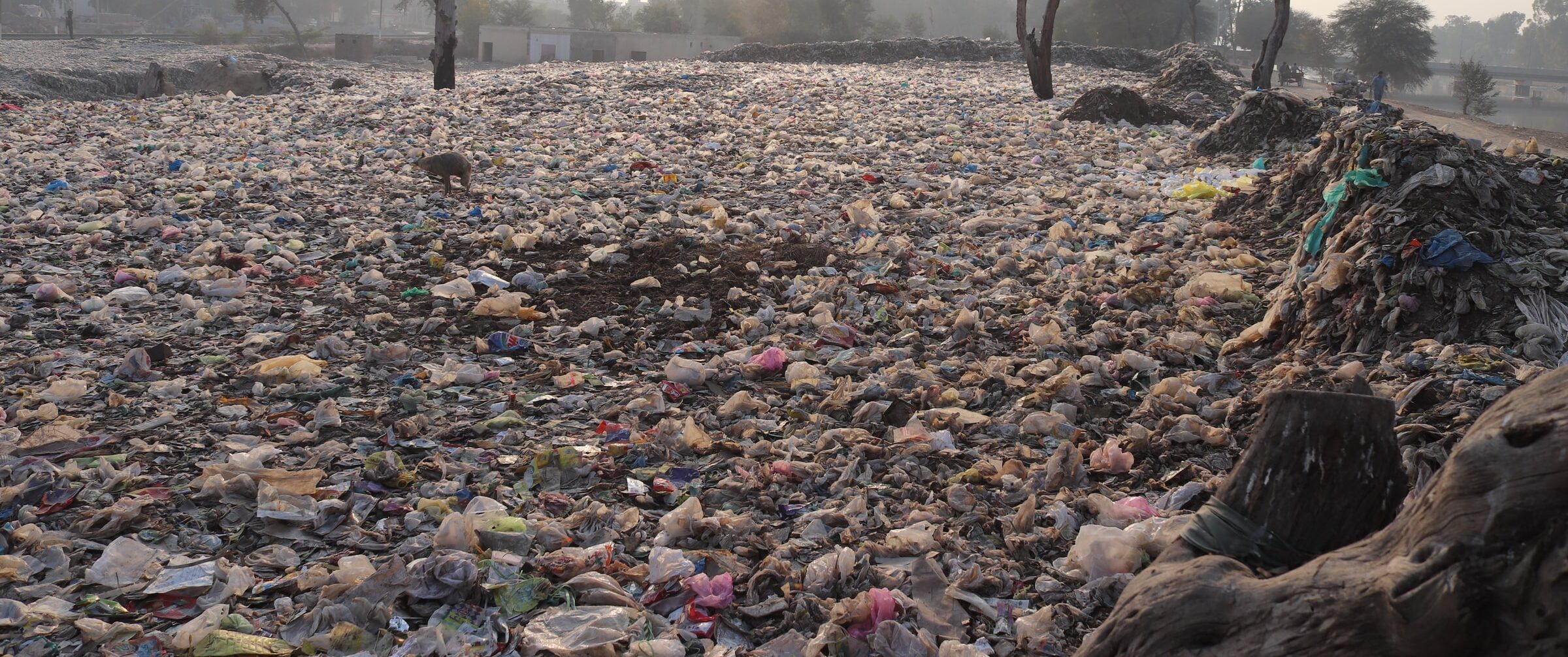Written by: Tim Radford
This story includes details on the impacts of climate change that may be difficult for some readers. If you are feeling overwhelmed by this crisis situation here is a list of resources on how to cope with fears and feelings about the scope and pace of the climate crisis.
When it comes to plastic pollution, humankind may already be on dangerous ground, a new study shows.
The output of all polymer compounds fashioned from fossil fuel sources in the last half-century has now exceeded a notional “planetary boundary” that defines a safe space for civilization, the study shows. By 2050, the cumulative total of manufactured plastics could reach 33 billion tonnes unless steps are taken to rein it in.
“There has been a fifty-fold increase in the production of chemicals since 1950. This is projected to triple again by 2050,” said Patricia Villarrubia-Gómez, of Sweden’s Stockholm Resilience Centre, one of 14 scientists who have raised the alarm in the journal Environmental Science and Technology.
The production of plastics products—from shopping bags to insulating cables, from soft drink bottles to children’s toys, from coffee cups to surgical gloves—adds up to a mass already much already greater than all wild mammals, all humankind, and all human domestic cattle together.
And an estimated 80 percent of all the plastics ever produced remain in the environment. This volume of enduring detritus contains only some of the 350,000 different manufactured chemicals that have found their way into the environment in the last seven decades. Only a fraction of these have been assessed for safety.
Plastic waste has been found all over the planet, on Antarctic beaches, in north polar ice, in the ocean depths, floating on ocean currents, in the tissues of mammals and fish, in the stomachs of seabirds, and even at the pinnacle of Mt. Everest.
“The rate at which these pollutants are appearing in the environment far exceeds the capacity of governments to assess global and regional risks, let alone control any potential problems,” said study co-author Bethanie Carney Almroth from the University of Gothenburg in Sweden. “Some of these pollutants can be found globally, from the Arctic to Antarctica, and can be extremely persistent. We have overwhelming evidence of negative impacts on Earth systems.”
Significantly, this latest finding now confirms that humankind has already exceeded five “planetary boundaries” in the last few decades. The notion of a planetary safe space—safe for humankind—was confected in 2009, when the Stockholm Resilience Centre tried to assess the scale of human impact on the planet and the potential barriers that, once crossed, could affect planetary stability—more precisely, the stable Earth systems that have allowed humans to flourish for the last 10,000 years.
Some of these boundaries have already been breached: these include the greenhouse gas balance that maintains a stable climate, and the land use changes that erode the wilderness needed to keep the forests, wetlands, savannahs, and other ecosystems naturally healthy and functioning. Agricultural expansion means there is more nitrogen and phosphorus in the environment than nature can safely handle. Biodiversity is in crisis: species are already being extinguished at a catastrophic rate. The oceans are becoming ever-more acidic, but for the moment ocean ecosystems may be coping.
So the latest research establishes that, of the nine identified boundaries, five have now been crossed, with global consequences that cannot be predicted.
For most of human history, people used the resources to hand. Since the Second World War, humans have introduced entirely novel products into the soil, the atmosphere, and the oceans: plastics, pesticides, industrial chemicals, consumer products, artificial fabrics, antibiotics and other pharmaceuticals, many of them from fossil fuel sources such as crude oil.
All these entities have to be made from raw material provided by atmosphere, from rocks, oceans, and ecosystems that took two billion years to evolve. For useful chemicals to exist, the natural world must be depleted.
“Material extraction as feedstocks for novel entities was approximately 92 billion tonnes globally in 2017, and is projected to reach 190 billion tonnes by 2060,” the authors write. Of the 350,000 chemicals or mixes of chemicals on the global market, 70,000 have been registered in the last decade. The long-term impact of many of these is simply unknown. But there is enough evidence already to suggest that these increases in production could put the health of the planetary system at risk.
“We need to be working towards implementing a fixed cap on chemical production and release,” said study co-author Carney Almroth.
“Shifting to a circular economy is really important,” agreed another co-author, Sarah Cornell of the Stockholm Resilience Centre. “That means changing materials and products so they can be reused, not wasted, designing chemicals and products for recycling, and much better screening of chemicals for their safety and sustainability.”
Header Image Credit: Muhammad Numan/Unsplash
This article is published courtesy of The Energy Mix.







